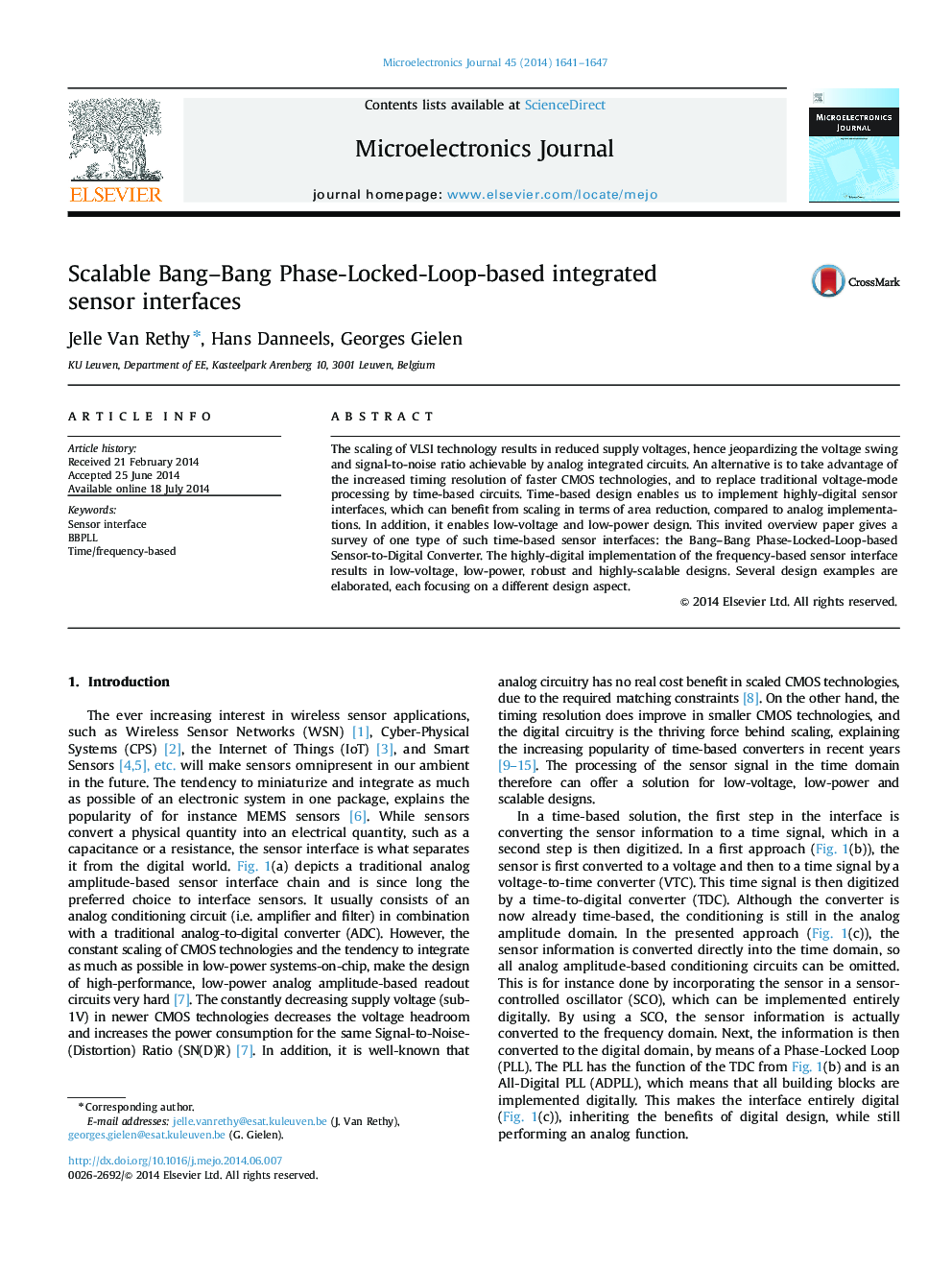| Article ID | Journal | Published Year | Pages | File Type |
|---|---|---|---|---|
| 543204 | Microelectronics Journal | 2014 | 7 Pages |
The scaling of VLSI technology results in reduced supply voltages, hence jeopardizing the voltage swing and signal-to-noise ratio achievable by analog integrated circuits. An alternative is to take advantage of the increased timing resolution of faster CMOS technologies, and to replace traditional voltage-mode processing by time-based circuits. Time-based design enables us to implement highly-digital sensor interfaces, which can benefit from scaling in terms of area reduction, compared to analog implementations. In addition, it enables low-voltage and low-power design. This invited overview paper gives a survey of one type of such time-based sensor interfaces: the Bang–Bang Phase-Locked-Loop-based Sensor-to-Digital Converter. The highly-digital implementation of the frequency-based sensor interface results in low-voltage, low-power, robust and highly-scalable designs. Several design examples are elaborated, each focusing on a different design aspect.
